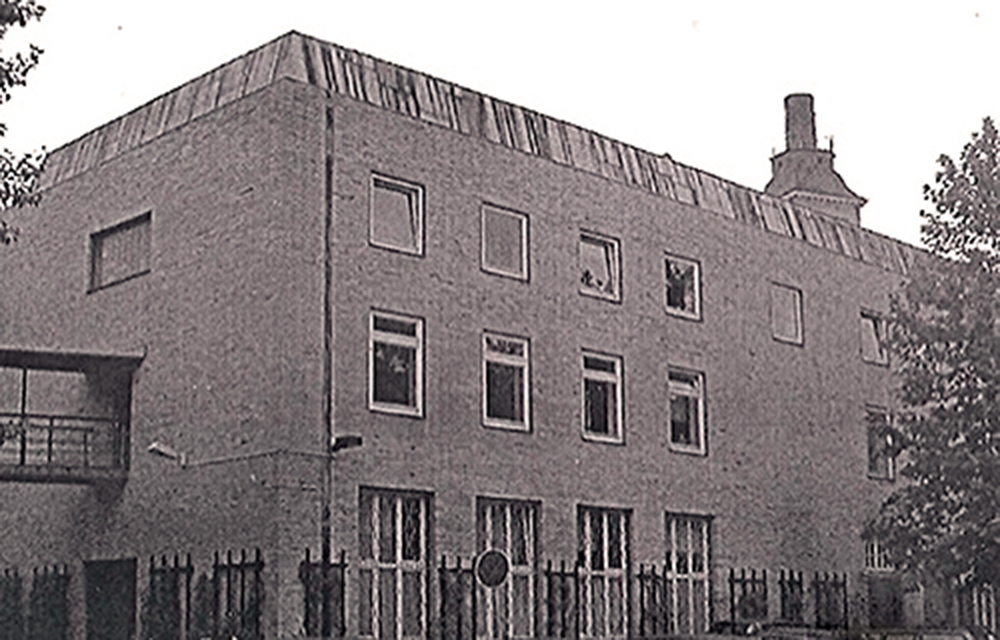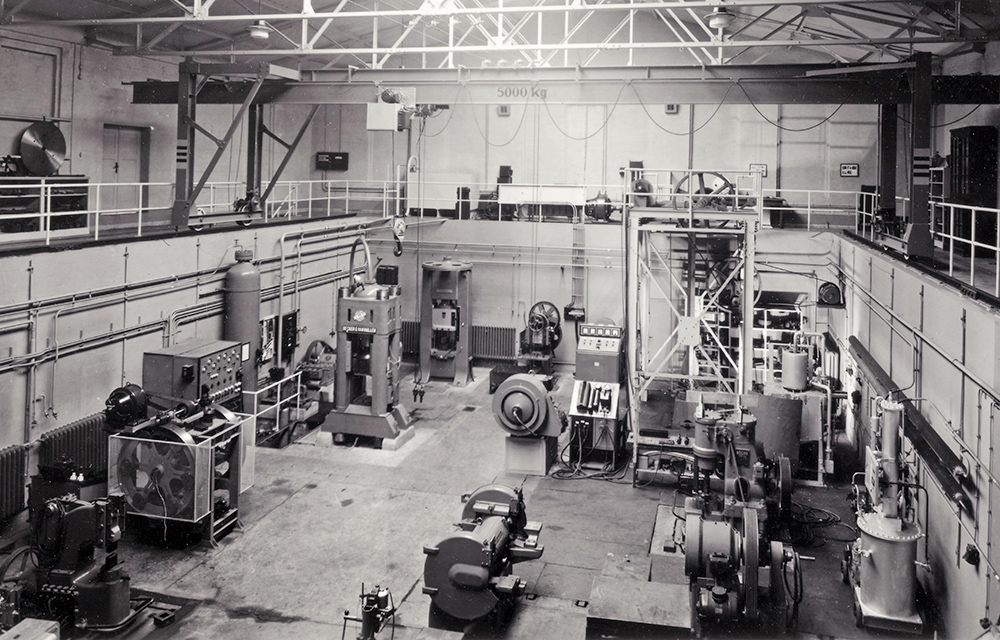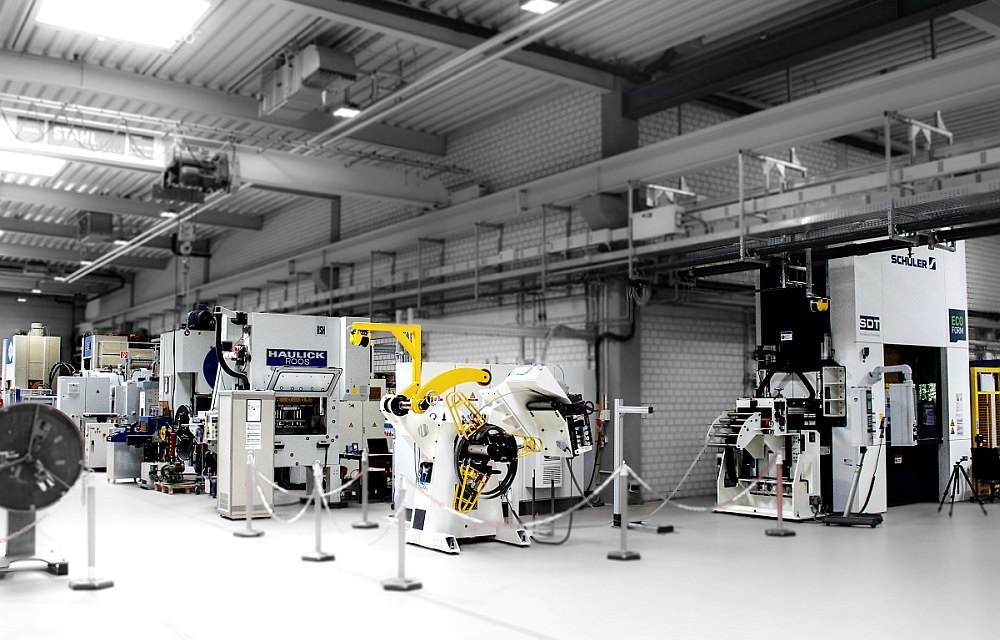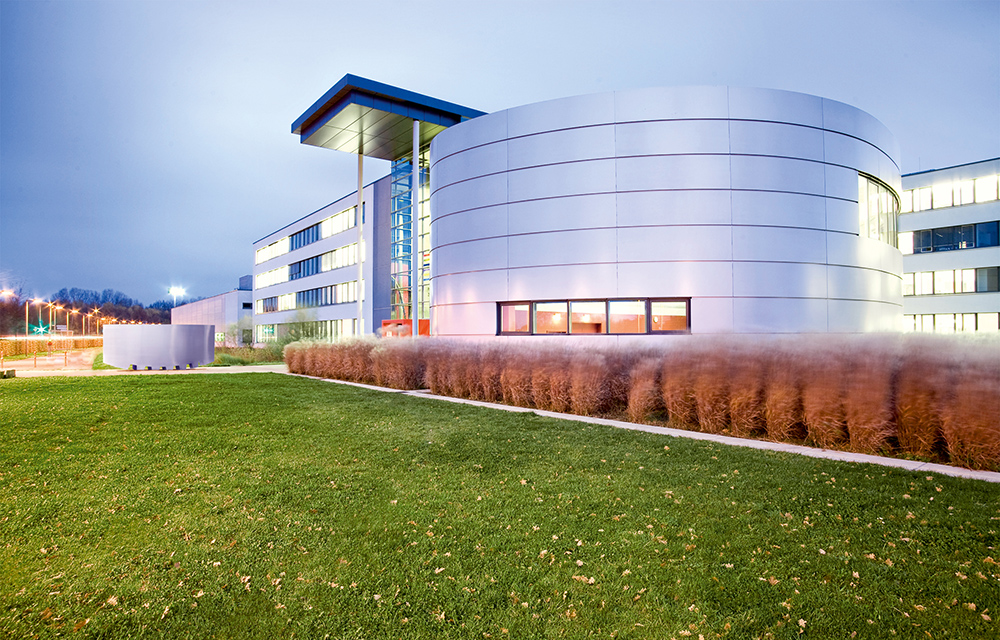The Institute of Forming Technology and Machines is one of the oldest forming technology institutes at German universities. It developed from the chair for "Mechanical Technology", which Karl Karmasch handed over to Hermann Fischer in 1875. As Hermann Fischer's successor, Friedrich Schwerd took over the chair for "Mechanical Technology", "Building Technology", "Heating and Ventilation" and "Machine Tool Technology" in 1911. It was his task to establish a separate machine tool institute, which was separated from the other departments for the first time. Under his leadership, the institute developed into the largest of its time, and even before the First World War Friedrich Schwerd was intensively involved in sheet steel processing. In 1928, a test center for grinding wheels was added to the institute.
In 1947, Otto Kienzle took over the Institute for Machine Tools, which had been badly damaged by air raids, and made efforts to rebuild it. In order to promote the necessary contact between the institute and the practice, Otto Kienzle founded the "Hannoversche Forschungsinstitut für Fertigungsfragen e.V." (Hanover Research Institute for Production Issues) in 1951.
From 1934 to 1957, he was editor of the journal "Werkstattstechnik", in which he published papers in the fields of sheet metal working and die forging. In 1954, the department was divided into the Chair of Production Engineering and Machining Machine Tools and the Chair of Machine Tools and Forming Technology, which was continued by Otto Kienzle until the beginning of 1963.
His successor, Hans Bühler, also took over the leadership of the "Hannoversche Forschungsinstitut für Fertigungsfragen e.V." (HFF) and, one year later, the additional official duties of director of the Official Materials Testing Institute for Tools, Machine Tools and Manufacturing Technology, which was established at the institute in that year. New promising research areas were tackled, such as high-speed forming, basic research on strip profiling, and the field of residual stress research. For more than 12 years, Hans Bühler was the editor of "Schmiedetechnische Mitteilungen" and the technical journal "Industrieanzeiger". The colloquia on forming technology, which he continued to organize, were attended by up to 800 participants.
In April 1974, he handed over one of the largest institutes at the Technical University of Hannover to his successor Eckart Doege. As head of the development, testing and research department of a well-known press factory, he further expanded the field of forming machines and sheet metal forming. In addition, he set a new focus by introducing the finite element method as a calculation method. At the same time, efforts were intensified to design forming processes using elementary approaches with experimental balancing.
The use of CA techniques within forming technology represents another focus of research activities. Eckart Doege also took over the leadership of the "Hannoversche Forschungsinstitut für Fertigungsfragen e.V." (HFF). The HFF brings together the Friends of the Institute; its tasks include advisory activities and technology transfer.
Bernd-Arno Behrens has been a professor at the institute since October 2003. He took over the institute's management and the chair from Eckart Doege in December 2003. In his secondary office, Bernd-Arno Behrens is the executive speaker of the board of the official Materials Testing Institute for Tools, Machine Tools and Production Engineering (MPA). In addition to the official testing of tools and machines, this institute deals with safety inspections of grinding tools and grinding equipment, as well as quality assurance, test organization, DKD calibration service and general materials testing, including official expert opinions in cases of damage.
In May 2004, the institute moved to the newly built Production Technology Centre Hannover (PZH), where all production technology institutes of the university can research and work under one roof in direct cooperation with industry.
























